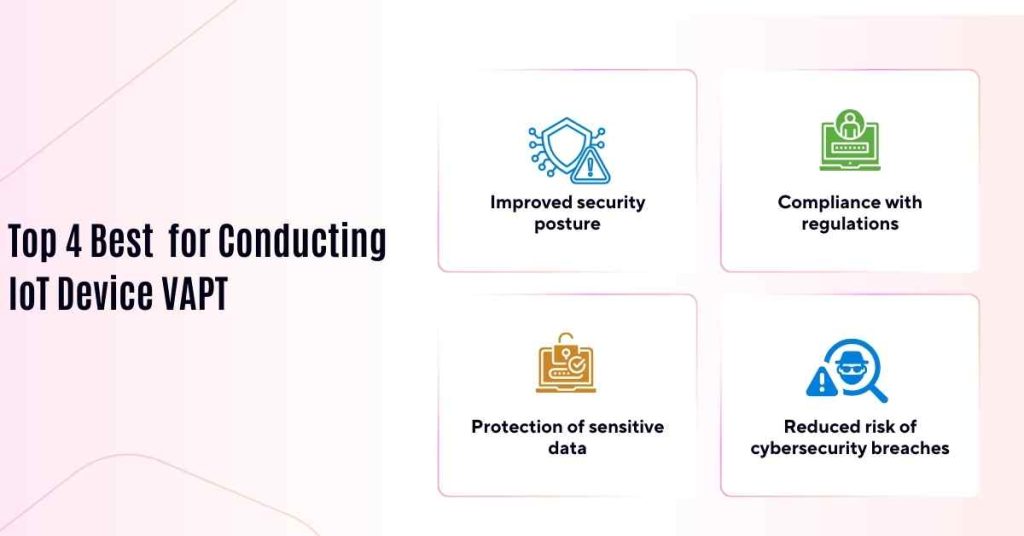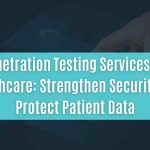In recent years, Singapore has witnessed exponential growth in the adoption of Internet of Things (IoT) devices across various industries, including manufacturing, healthcare, finance, and transportation.
The country’s vision to become a Smart Nation has led to the proliferation of IoT devices, transforming the way businesses operate and interact with their customers. However, this increased reliance on IoT devices has also raised concerns about their security and vulnerability to cyber threats.
The Singapore government has implemented various measures to ensure the security of IoT devices, including the Cyber Security Agency of Singapore’s (CSA) Cybersecurity Awareness Campaign and the establishment of the Singapore Cybersecurity Certification Scheme.
Despite these efforts, many businesses in Singapore remain unaware of the risks associated with IoT devices and the importance of conducting regular Vulnerability Assessment and Penetration Testing (VAPT) to identify and mitigate these risks.
In this article, we will explore the Top 15 Reasons Why IoT Device VAPT is Important for Businesses in Singapore.
List of Top 15 Reasons Why IoT Device VAPT is Important for Businesses in Singapore

Here is the list of Top 15 Reasons Why IoT Device VAPT is Important for Businesses in Singapore:
1. Protection of Sensitive Data
IoT devices relay a huge volume of data, much of which is of high privacy and security sensitivity such as PII, financial data and other business information.
Performing VAPT of IoT devices regularly ensures that this sensitive data is shielded from else’s access, exploitation or hijacking.
2. Prevention of Cybersecurity Breaches
IoT devices being connected to the internet are prone to cyber criminals who criminally seize advantage of these device’s vulnerabilities to reach into other networks or systems.
Nightly VAPT makes it easier for breaches to be addressed by addressing the vulnerabilities that cause such incidences due to the extreme impact they can have on business organizations.

3. Compliance with Regulations
There are some regulations and standards regarding data protection and cybersecurity, that are obligatory for businesses in Singapore.
The regular VAPT tests on the IoT devices also serve to show the lawful compliance by the business entities to these regulations and avoid legal fines and penalties.
4. Reduced Risk of DDoS Attacks
Often IoT things can prove to be botnets carrying out Distributed Denial of Service (DDoS) attacks that can potentially paralyse a business.
VAPT carried out periodically assists organisations in preventing the discovery of the loopholes that real attackers could use in launching DDoS attacks.
5. Protection of Reputation
Cybersecurity breaches or data incidents can lead to business loss of reputation or customer trust among other things.
VAPT on IoT devices if done repeatedly give insights into weaknesses within the devices and thus safeguards the business and its image and worth.
6. Cost Savings
VAPT of IoT devices regularly is cost-effective in the long run while performing it on an occasional basis is costly.
Being able to prevent and prioritise these risks allows the firms to avoid the expenses they would incur in case they have to contain and repair invasions of their cybersecurity.
7. Improved Incident Response
Periodic VAPT of IoT devices assists organizations in countering any emerging cyber threat to their operations.
That is why performing a risk analysis and creating contingency measures, organizations don’t suffer severely from the consequences of a cyberattack and are ready to respond to the events as soon as possible.
8. Protection of Business Continuity
IoT devices may be essential to a business and perform crucial tasks; thus, a cybersecurity breach or a data incident will affect business operations.
Penetration testing on IoT devices is a proactive means of ensuring the dangers are captured early hence preventing disruption of business continuity.
9. Identification of Shadow IoT Devices
The other one is called Shadow IoT devices which is an IoT device that is connected to a network and the owner does not know it.
The execution of routine VAPT on IoT devices enables the detection of shadow IoT devices, resulting in less likelihood of penetration or leakage of particular data.
10. Improved Security Posture
VAPT for IoT devices should be conducted on a routine basis as it aids in enhancing the security status of a business by getting rid of weaknesses and hence minimizing the chances of cyber-boosted security failures and data mishaps.
11. Enhanced Customer Trust
Just like in the case of other forms of pen-testing, businesses can show their concern for customer data and privacy by performing VAPT on IoT devices consistently.
This helps to facilitate confidence and credibility with the customers and in the market as well.
12. Improved Regulatory Compliance
Performing VAPT on IoT devices provides businesses with different sets of compliance as to regulations and standards for data protection and cybersecurity.
These are; The Personal Data Protection Act (PDPA), the Payment Card Industry Data Security Standard (PCI DSS), and the Health Insurance Portability and Accountability Act (HIPAA).
13. Identification of Insider Threats
VAPT of IoT devices used by a company regularly provides insights on the potential insiders, either internal staff or external contractors who cause either inadvertent or intentional harm to IoT security.
14. Protection of Intellectual Property
IoT devices often contain sensitive intellectual property (IP), including proprietary algorithms and trade secrets.
Conducting regular VAPT on IoT devices helps to protect this IP from unauthorized access, misuse, or theft.
15. Reduced Risk of Ransomware Attacks
IoT devices can be vulnerable to ransomware attacks, which can have devastating consequences for businesses.
Conducting regular VAPT on IoT devices helps to identify and mitigate vulnerabilities that can be exploited by attackers to launch ransomware attacks.
Top 4 Benefits of Conducting Regular VAPT on IoT Devices

Conducting regular VAPT on IoT devices offers numerous benefits, including:
1. Improved security posture
Scheduled VAPT enables the detection of new risks that attackers may exploit, thus enhancing the security of the company’s systems.
2. Compliance with regulations
Performing VAPT on IoT devices regularly not only enables a company to ensure that every derived IoT device meets certain regulations and standards regarding data protection and cybersecurity but also to provide proof of compliance.
3. Protection of sensitive data
Having regular VAPT in place guarantees that data collected and transmitted by IoT devices is safe from being accessed, exploited or stolen by anyone unfriendly.
4. Reduced risk of cybersecurity breaches
Current VAPT aids in spotting the loopholes that attackers can easily and constantly use to penetrate cybersecurity.
Summary
Here is the summary of the Top 15 Reasons Why IoT Device VAPT is Important for Businesses in Singapore article.
- Protection of Sensitive Data
- Prevention of Cybersecurity Breaches
- Compliance with Regulations
- Reduced Risk of DDoS Attacks
- Protection of Reputation
- Cost Savings
- Improved Incident Response
- Protection of Business Continuity
- Identification of Shadow IoT Devices
- Improved Security Posture
- Enhanced Customer Trust
- Improved Regulatory Compliance
- Identification of Insider Threats
- Protection of Intellectual Property
- Reduced Risk of Ransomware Attacks
Conclusion
Therefore, IoT device VAPT proves to be crucial in provisions for business organisations in Singapore to guard their data and avoid regulatory compliance violations.
When businesses take their IoT devices through VAPT tests regularly, they can find vulnerabilities and prevent future cybersecurity attacks or data complications.
This assists in preserving the business and organisational continuity, enhancing security and credentials and gaining the confidence of the customer. With the increase in the use of IoT devices in Singapore, any business should consider performing IoT device VAPT to ensure that it does not fall prey to cyber criminals.
FAQs:
1. What is IoT Device VAPT?
Ans: IoT Device VAPT stands for Internet of Things (IoT) Device Vulnerability Assessment and Penetration Testing. It is a security testing process that identifies vulnerabilities in IoT devices and simulates attacks to test their defences.
2. Why is IoT Device VAPT necessary?
Ans: IoT Device VAPT is necessary to identify and address vulnerabilities in IoT devices before they can be exploited by attackers. This helps to prevent cybersecurity breaches and data incidents that can have devastating consequences for businesses.
3. What kind of vulnerabilities can IoT Device VAPT identify?
Ans: IoT Device VAPT can identify a wide range of vulnerabilities, including:
1. Network vulnerabilities, such as open ports and weak passwords
2. Firmware vulnerabilities, such as outdated or unpatched firmware
3. Software vulnerabilities, such as outdated or unpatched software
4. Configuration vulnerabilities, such as insecure device settings
4. How is IoT Device VAPT conducted?
Ans: IoT Device VAPT is conducted by using a combination of testing tools and techniques, including:
Vulnerability scanning tools, such as Nessus or OpenVAS
Penetration testing tools, such as Metasploit or Burp Suite
Manual testing, such as manual configuration and testing of device settings
5. Who should conduct IoT Device VAPT?
Ans: IoT Device VAPT should be conducted by experienced security testers who have knowledge of IoT devices and their vulnerabilities. This can include internal security teams or external security consultants.
6. How often should IoT Device VAPT be conducted?
Ans: IoT Device VAPT should be conducted on a regular basis, such as quarterly or annually, to ensure that vulnerabilities are identified and addressed before they can be exploited by attackers.
7. What is the cost of IoT Device VAPT?
Ans: The cost of IoT Device VAPT can vary depending on the scope and complexity of the testing, as well as the experience and qualifications of the tester.
8. Can IoT Device VAPT be conducted remotely?
Ans: Yes, IoT Device VAPT can be conducted remotely, using remote access tools and techniques to test the device and identify vulnerabilities. However, on-site testing may be necessary for some devices or environments.
9. What is the difference between IoT Device VAPT and traditional VAPT?
Ans: IoT Device VAPT is a specialised form of VAPT that focuses on the unique vulnerabilities and risks associated with IoT devices. It requires specialized knowledge and techniques to conduct and is designed to help businesses protect their IoT devices and data.
10. Is IoT Device VAPT required by law or regulation?
Ans: IoT Device VAPT is not required by law or regulation, but it is recommended by many industry and regulatory standards, such as the Payment Card Industry Data Security Standard (PCI DSS) and the Health Insurance Portability and Accountability Act (HIPAA).












